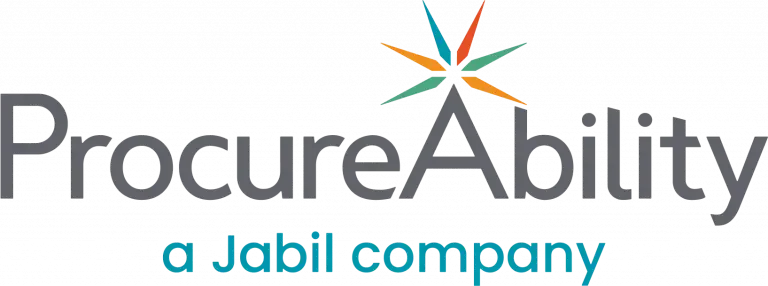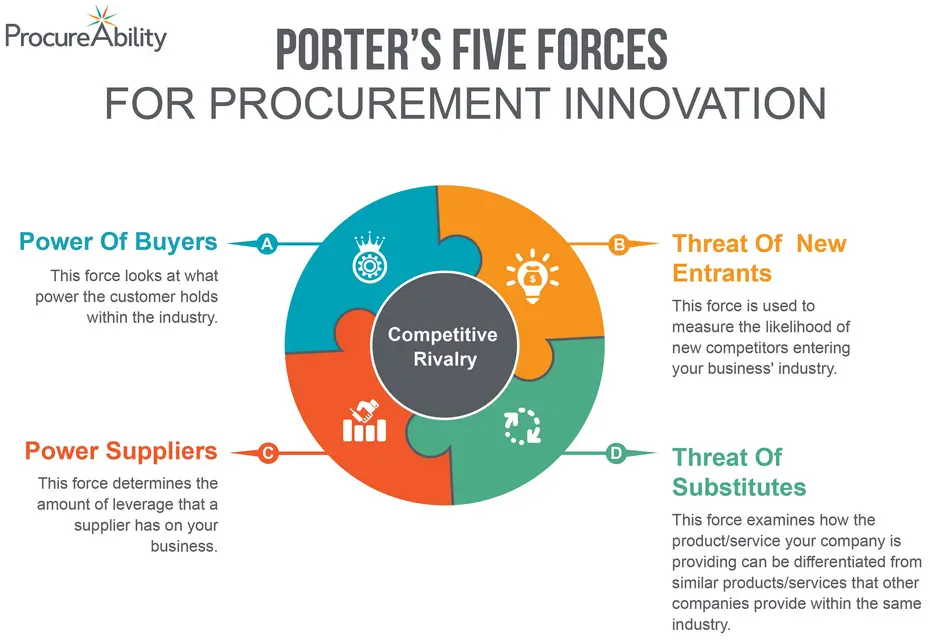
As global markets become more complex and supply chains more volatile, traditional sourcing approaches alone are no longer sufficient. Therefore, to drive real impact, procurement organizations must take a broader, more analytical view of the competitive forces shaping their categories and supply base. In particular, a deep understanding of market dynamics, supplier power, and competitive pressure is essential for building resilient, value-driven strategies.
This is where Porter’s Five Forces comes in. Originally developed as a framework to analyze industry competition, Porter’s model has evolved into a powerful tool for strategic procurement and category management. By applying the Five Forces—supplier power, buyer power, competitive rivalry, threat of substitution, and barriers to entry— procurement teams can uncover risks, identify opportunities, and align sourcing strategies with broader business objectives.
For example, at ProcureAbility, we recently helped a large utility client integrate Porter’s Five Forces analysis into their category planning process. By carefully evaluating the forces influencing their supply base and market structure, we guided them in building a more agile, fact-based category strategy that could adapt as conditions evolve.
In this blog, we will therefore explore how procurement teams can apply Porter’s Five Forces to improve supplier strategy, optimize category management, and enhance sourcing execution.
 Porter’s Five Forces include:
Porter’s Five Forces include:
Competitive Rivalry:
Understanding the strength of your competition within an industry is an essential component to formulating a successful business strategy. Competitive rivalry is the most important factor in this analysis because it both impacts and is impacted by all the other forces.
Factors to consider in a sourcing event:
- How many competitors does your business have?
- How much of a market share do you hold against your competitors?
- Can you leverage your company’s position within your competitive environment to achieve higher profit margins?
Power of Buyers:
This force looks at what power the customer holds within the industry. The consumer market dictates the demand of your product or service, making it a significant factor of business profitability.
Power of buyer’s factors to consider in a sourcing event:
- How can buyer demand impact the prices of your product/service?
- How many buyers do you have? (The fewer customers your business has, the greater power buyers hold)
- What level of importance do different customers have to your business? (Some customers may be more valuable than others, and therefore hold more power)
Power of Suppliers:
This force determines the amount of leverage that a supplier has on your business. Suppliers are key determinants in your businesses operating cost, and ability to provide a product/service. Thus, this force can have a large impact on profitability.
Power of supplier’s factors to consider in a sourcing event:
- How essential is the supplier’s product/service to your business?
- Are there multiple suppliers that can provide the same product/service? (The fewer suppliers there are, the more power they have)
- Can you leverage the number of potential suppliers for concessions?
Threat of Substitutes:
The purpose of this force is to examine how the product/service your company is providing can be differentiated from similar products/services that other companies provide within the same industry. If there are numerous substitutes to what your business is delivering to customers, then you will have less power in your industry and face increased competition.
Threat of substitute’s factors to consider in a sourcing event:
- How is your company’s product/service unique?
- How does the quality of your product/service compare to substitutes?
- How does the price of your product/service compare to substitutes?
Threat of New Entrants:
This force is used to measure the likelihood of new competitors entering your business’ industry and can provide valuable insight when forecasting and developing a business strategy. As a company you should always protect yourself against new entrants to prevent losing market share.
Threat of new entrant’s factors to consider in a sourcing event:
- How quickly is the market your business operates in growing? (Markets that are quickly developing will result in increased competition)
- How much initial capital would a company need to enter your market?
- How strictly is your industry regulated? (Defense vs. furniture)
- What level of customer/brand loyalty exists in the in the industry?
Understanding and applying Porter’s Five Forces gives procurement professionals a structured way to evaluate market dynamics, anticipate supplier behavior, and make more informed strategic decisions. Whether you’re aiming to reduce costs, manage risk, or unlock innovation, this framework helps tie your procurement strategy directly to broader business goals.
As procurement continues to play a central role in organizational success, integrating analytical tools like Porter’s model into your category planning and sourcing approach can provide a meaningful competitive edge.




